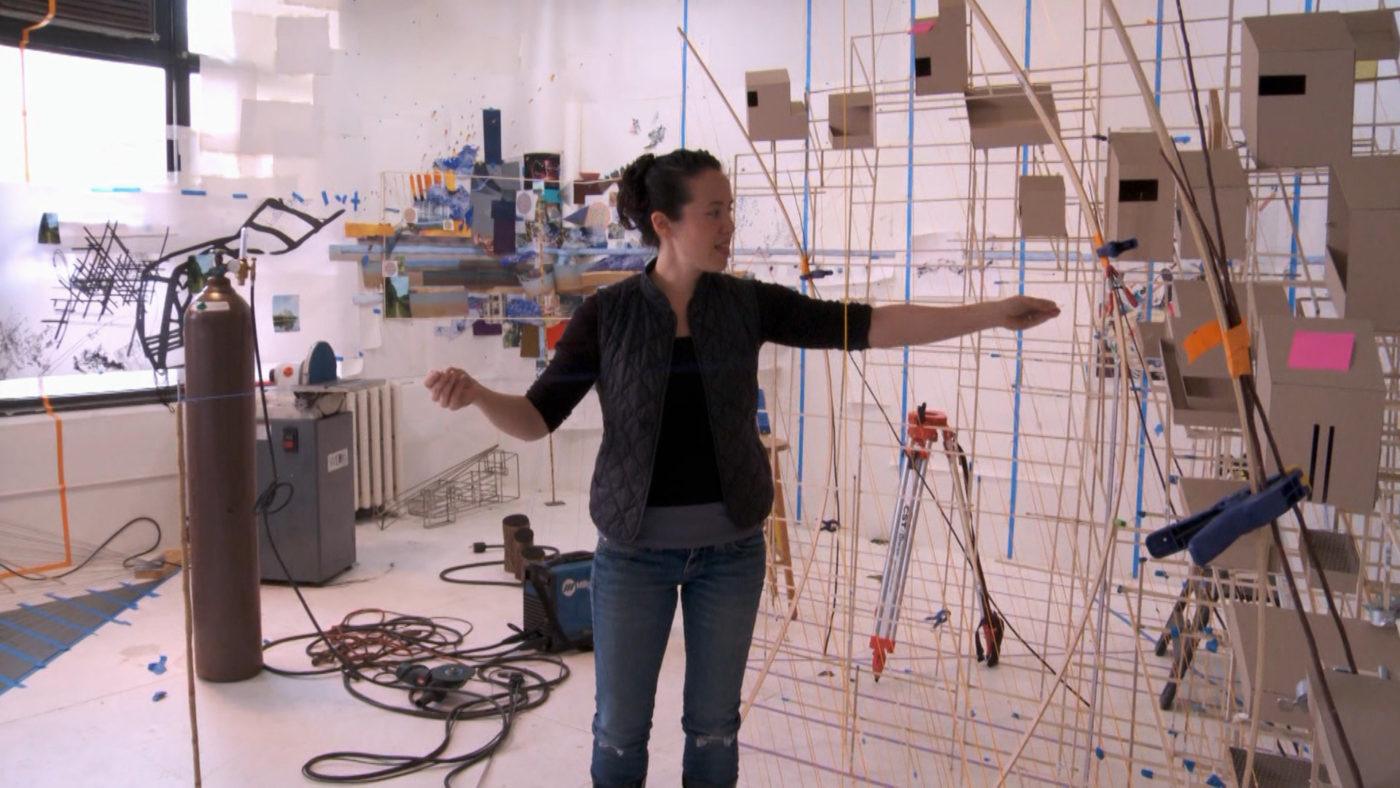Studio as Laboratory

Metadata
Highlights
- Charlie Ray [once] asked me in an interview, “Do you know what was the first work of art you ever made?” It was maybe this: My dad had built a house, and there was a big mound of dirt that was left from digging the foundation, and my brother and I dug a hole through the bottom of it. We’d go inside the hole, and it was quite dangerous because it [seemed to be] floating; we couldn’t see out. This experience of hiding, knowing that it could collapse on you—I feel like that, in some ways, was my first sculpture. (View Highlight)
- Can you talk about the use of ordinary, found materials in your work?
I was interested in value: How does an object acquire value? Why is it more valuable in the museum than in your house? How do things we own acquire value? How does a shirt that you know thousands of other people own become yours? How do you sense that an object is cared for or valued? [I wanted to] take things that had very little value—that were commonplace, mass-produced, easily accessible, easily replaced—and put them in a location, to craft and juxtapose them in a way that they seem to have value, so that there was a strong shift, and then back again to being nothing. That was something I wanted to play with. (View Highlight)
- how does an object that’s inanimate come alive? I think that improvisation is crucial to the whole process, in that I want the work to be an experience of something live: a feeling that it was improvised, that you can see decisions happening on site, the way you see a live sports event or see live jazz and [know] that it happened and is never going to happen again. That feeling—of something happening in the moment—is crucial.
A lot of the works have this feeling, like going into a studio space or a laboratory. [This feeling] also has a relationship to intimacy: how a studio visit can be more interesting than a museum show or an Art21 interview can be more interesting than an [exhibition] catalogue. [It suggests] the idea that you’re getting a backstory of evidence: you’re going to an archaeological or forensic site, seeing what’s behind a process and even a culture, and starting to understand behavior. (View Highlight)
Studio as Laboratory

Metadata
Highlights
- Charlie Ray [once] asked me in an interview, “Do you know what was the first work of art you ever made?” It was maybe this: My dad had built a house, and there was a big mound of dirt that was left from digging the foundation, and my brother and I dug a hole through the bottom of it. We’d go inside the hole, and it was quite dangerous because it [seemed to be] floating; we couldn’t see out. This experience of hiding, knowing that it could collapse on you—I feel like that, in some ways, was my first sculpture. (View Highlight)
- Can you talk about the use of ordinary, found materials in your work?
I was interested in value: How does an object acquire value? Why is it more valuable in the museum than in your house? How do things we own acquire value? How does a shirt that you know thousands of other people own become yours? How do you sense that an object is cared for or valued? [I wanted to] take things that had very little value—that were commonplace, mass-produced, easily accessible, easily replaced—and put them in a location, to craft and juxtapose them in a way that they seem to have value, so that there was a strong shift, and then back again to being nothing. That was something I wanted to play with. (View Highlight)
- how does an object that’s inanimate come alive? I think that improvisation is crucial to the whole process, in that I want the work to be an experience of something live: a feeling that it was improvised, that you can see decisions happening on site, the way you see a live sports event or see live jazz and [know] that it happened and is never going to happen again. That feeling—of something happening in the moment—is crucial.
A lot of the works have this feeling, like going into a studio space or a laboratory. [This feeling] also has a relationship to intimacy: how a studio visit can be more interesting than a museum show or an Art21 interview can be more interesting than an [exhibition] catalogue. [It suggests] the idea that you’re getting a backstory of evidence: you’re going to an archaeological or forensic site, seeing what’s behind a process and even a culture, and starting to understand behavior. (View Highlight)

